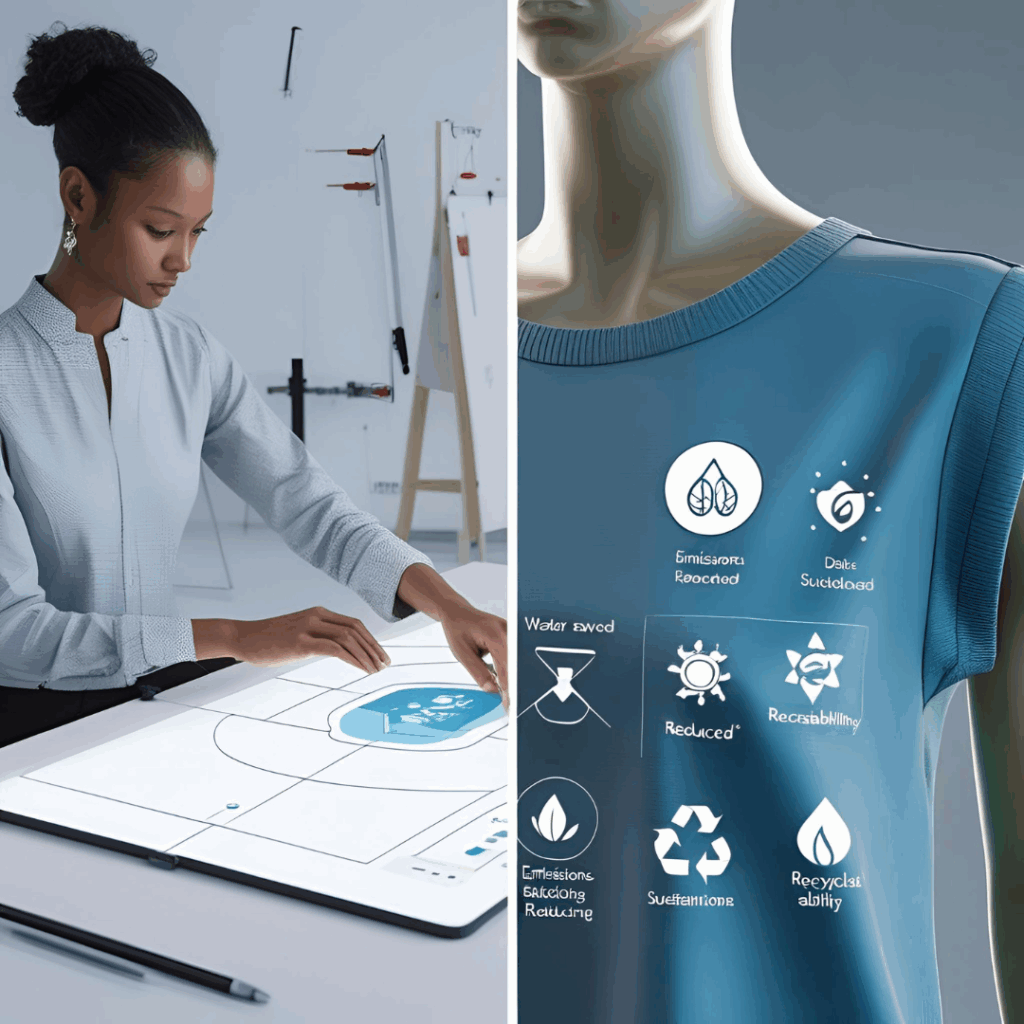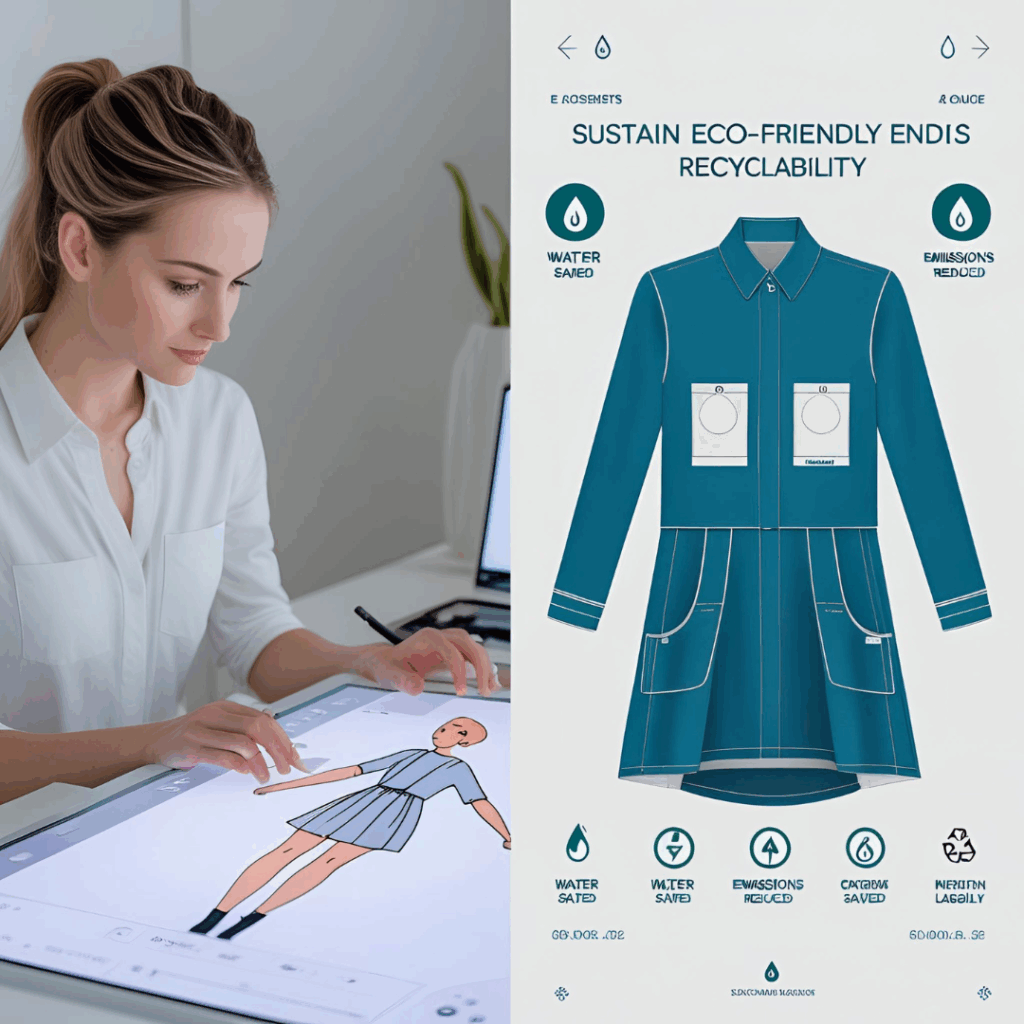The fashion industry is undergoing a massive transformation as it faces increasing pressure to reduce its environmental impact. Traditionally known for excess, overproduction, and waste, fashion is now embracing a data-driven future where artificial intelligence (AI) and algorithms assist in making more sustainable design decisions. By analyzing massive amounts of information, these technologies are helping designers choose fabrics, silhouettes, and production methods that are not only creative and trendy but also less harmful to the planet.
The integration of AI into fashion design isn’t just a technical advancement — it’s a cultural shift. Designers are no longer relying solely on intuition and manual trend forecasting. Instead, they are collaborating with intelligent systems that can evaluate sustainability data in real-time, propose eco-friendly alternatives, and simulate product outcomes before a single fabric is cut.
The Environmental Cost of Traditional Fashion Design
Fashion is one of the most resource-intensive industries in the world. From water-guzzling cotton farms to chemical-heavy dyeing processes, the environmental toll of creating clothes is significant. A single pair of jeans can require over 7,000 liters of water to produce. Textile waste is also a major issue, with millions of tons ending up in landfills every year due to overproduction and poor planning.
Much of this waste stems from decisions made early in the design process — the type of fabric chosen, the cut of the garment, and even the color palette. Once a product is designed, it’s difficult and costly to make changes. That’s why it’s so powerful to bring data into the design phase: it allows for smarter, greener choices from the very beginning.
How Algorithms Are Enhancing Sustainable Design

1. Fabric Selection Based on Environmental Impact
AI-powered platforms can now assess the carbon footprint, water usage, and chemical processing involved in different textiles. These tools present designers with ranked options based on sustainability metrics. For example, instead of defaulting to conventional cotton, a designer might be advised to use recycled hemp or organic bamboo, which require far fewer resources.
Databases like the Higg Index provide standardized environmental scores for thousands of materials. AI can instantly pull from this data, offering comparisons and even suggesting newer alternatives that may not be widely known yet.
2. Generative Design and Pattern Optimization
Generative design uses algorithms to create a wide array of design variations based on a set of rules and sustainability goals. Designers input constraints — such as zero waste cutting, minimal fabric consumption, or recyclable material requirements — and the software generates numerous design proposals that meet those criteria.
This doesn’t replace the designer; instead, it enhances creativity within a framework of sustainability. The result is garments that are not only stylish and unique but also engineered to reduce offcuts, energy usage, and labor inefficiencies.
3. Predictive Trends to Avoid Overproduction
One of fashion’s most damaging habits is producing too much inventory. AI models trained on search data, social media, and historical sales can now forecast demand with high accuracy. This allows brands to create smaller, more targeted collections that are more likely to sell out, rather than ending up in clearance bins or landfills.
By predicting what consumers will actually want, and in what quantity, designers and manufacturers reduce risk — and drastically cut down on waste.
4. Virtual Prototyping and 3D Simulation
Rather than making multiple physical samples, which waste fabric and time, designers can now use 3D modeling software powered by AI to visualize how a garment will fit, drape, and move. These digital twins help catch design flaws early, eliminate unnecessary samples, and speed up the approval process with stakeholders.
In addition, some systems simulate wear-and-tear, helping designers choose construction methods and materials that improve durability, reducing fast-fashion turnover.
5. Lifecycle Assessment and Closed-Loop Thinking
AI can also assist in predicting how long a garment will last, how it will be disposed of, and whether it can be recycled or composted. Algorithms trained on lifecycle data can guide designers toward materials and finishes that support circular fashion — clothes that can be repurposed or broken down at the end of their life.
By planning for a garment’s future from the outset, designers take responsibility beyond the point of sale. This is a massive shift from the traditional linear model of “make, wear, throw away.”
The Human-Machine Collaboration
Although technology is playing a major role, it is still designers who lead the creative direction. The magic happens when human emotion, cultural storytelling, and artistic flair are combined with cold, hard data. The partnership between designer and algorithm doesn’t restrict creativity — it elevates it with purpose.
Some fashion schools have already begun training students in AI-assisted design, preparing the next generation of creatives to blend artistry with responsibility. At the same time, major brands are investing in in-house innovation labs to explore how data can help redefine luxury and streetwear alike.

Benefits Beyond the Environment
Sustainable design through AI isn’t just good for the planet — it also makes business sense. Reducing material waste lowers production costs. Predicting demand improves inventory turnover. Offering transparently sustainable collections increases brand loyalty among environmentally conscious consumers, especially Gen Z and Millennials.
Additionally, companies that implement greener practices early are more likely to meet evolving regulatory requirements and avoid potential fines or backlash. Fashion is facing increasing scrutiny from governments and watchdog groups, and transparency is quickly becoming a legal necessity as much as a moral one.
A Future Where Every Garment Tells a Story
Imagine buying a shirt and scanning a QR code that shows you exactly how the fabric was sourced, how much water was saved in its production, and even who designed it using AI to minimize waste. This level of transparency and innovation is not a fantasy — it’s already happening.
Brands like Adidas, Stella McCartney, and The Fabricant are experimenting with AI in their design processes. Tech startups are building platforms that allow independent designers to tap into these tools without massive budgets. And consumers are responding, favoring brands that demonstrate a clear commitment to sustainability through smart innovation.
The use of AI and algorithms in sustainable fashion design is not just a trend — it’s a necessity. As the climate crisis intensifies and resources become scarcer, the fashion industry has no choice but to design smarter, leaner, and more responsibly. Fortunately, the tools to do so are already here.







